When trying to access a website on a web browser, regardless of the platform, you may encounter the “This site can’t be reached” error message. This error message usually comes up in the Chrome browser, while other browsers may show different messages that essentially mean the same thing.
You may see errors like “Error 404: Page Not Found,” “DNS_PROBE_FINISHED,” or “ERR_CONNECTION_TIMED_OUT.” If you’ll notice, none of these errors exactly define what’s wrong and why you can’t access the website or the specific web page.
In this article, we shall go over what these errors mean and how you can fix the issue and get to the website.
Table of Contents
Causes for “This Site Can’t be Reached” Error
The error “this site can’t be reached” means that the website or the webpage you are trying to access is unavailable. Your computer cannot find the associated IP address for that specific page and is therefore unable to return any information on your screen.
The other error messages similar to this one have already been mentioned above. The error “ERR_CONNECTION_TIMED_OUT” means that the browser has been searching the web for quite some time and was unable to find the specified website/web page. “Error 404” and similar error messages also mean the same thing.
When a website is unreachable, it can be because of one or more reasons. The error can be both on the server end or at your (end-user) end. Here are the usual reasons for the “This site can’t be reached” error in Chrome or any web browser:
- The web page is offline – The website or the specific page you are trying to access is offline, which means it is no longer available to anyone. In this case, there is nothing you can probably do except contact the website owner.
- The page is experiencing overwhelming traffic – The page you are trying to access is already getting a lot of visitors and your data packets cannot get through. This can be resolved by accessing the page at a later time.
- Incorrect Domain Name Server (DNS) configuration – The DNS server is configured incorrectly and cannot resolve the name against a matching IP address.
- Firewall or antivirus software is blocking the traffic – Your firewall could be blocking the incoming or outgoing data packets.
For the two former reasons, there is nothing you can do to fix the issue that will allow you instant access to the web page. However, if there is something wrong at your end, there are several mitigation steps you can take to fix the issue right away.
Fix the “This Site can’t be Reached” Error
Perform the given solutions to get rid of the “This site can’t be reached” error in your browser in the given chronological order. We say so because we first need to establish whether the problem exists on your end or the website.
Check if the Website is Live
We first need to check whether the website or the web page you are trying to access is live, or is it offline. If it is offline, it means that the problem is not at your end. You can check simply by entering the page’s URL into an online service that tells whether the web page is active or inactive.
-
Go to either of the following websites within the browser:
-
Enter the URL of the web page throwing the “This site can’t be reached” error and hit the search button.
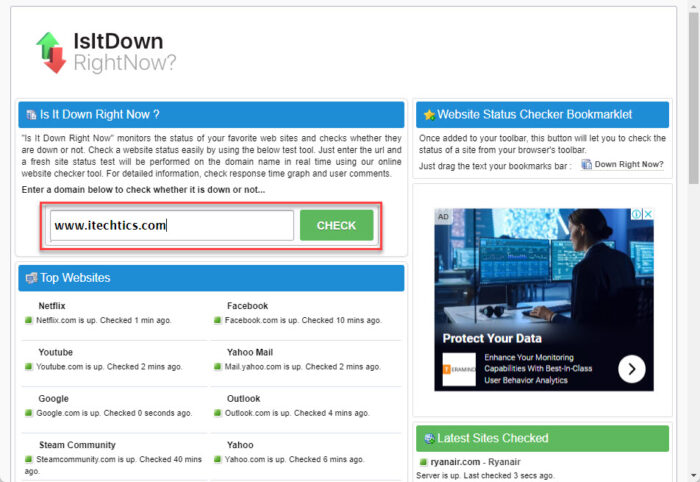
Check the website’s status The online service will now perform a quick scan and intimate you of the current status of the website.
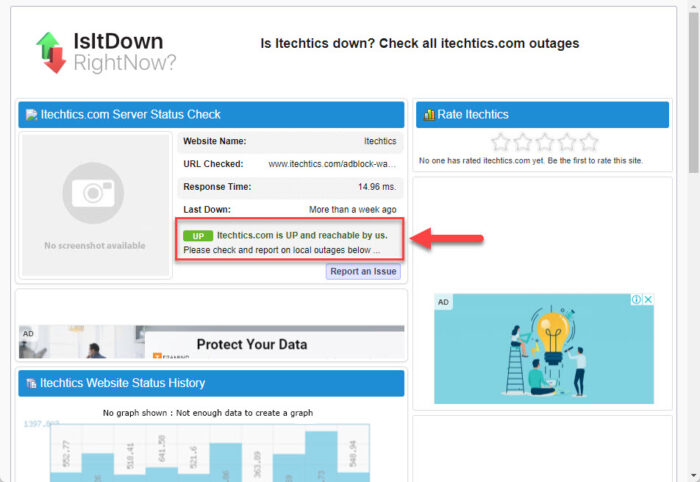
If the results are “UP,” it means that the website is active and that there is an issue at your end that you need to address. In this case, continue to perform the following fixes to address the “This site can’t be reached” error.
Restart Network Adapter
The network adapters can occasionally malfunction after running for several hours or having their configuration changed frequently. This can also cause them to not be able to function properly but is usually fixable with a simple restart.
-
Open the Network Connections applet.
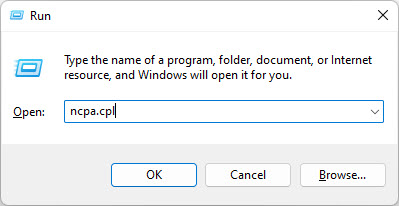
Open Network Connections applet Type in ncpa.cpl in the Run Command box.
-
Disable the network adapter.
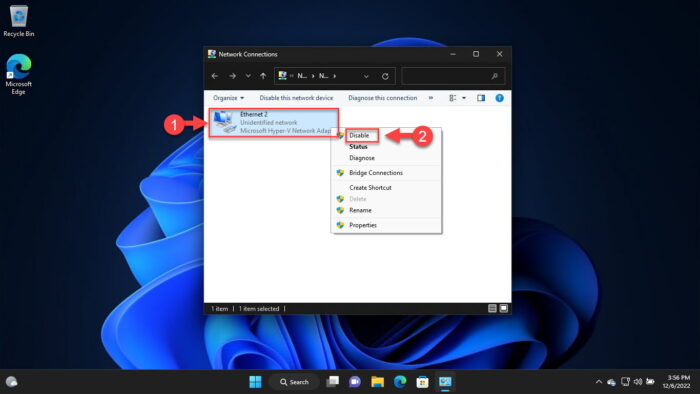
Disable network adapter Right-click on the adapter and then click Disable from the context menu.
-
Re-enable the network adapter.
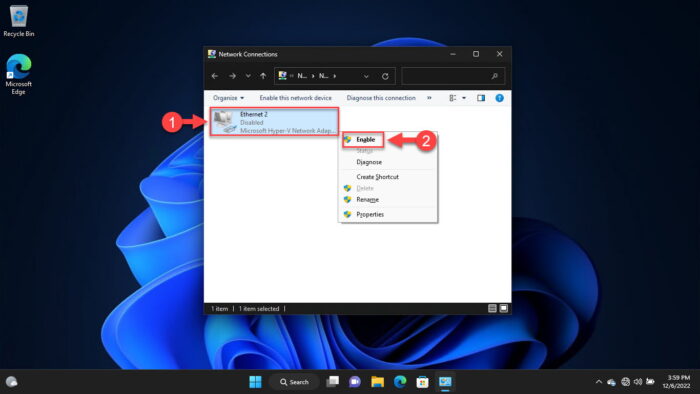
Enable the network adapter Right-click the adapter and click Enable from the context menu.
If this doesn’t resolve the issue and the web page is still inaccessible, then also try restarting your router/modem.
Restart Router/Modem
Similar to the network adapters, modems and routers can also go haywire (temporarily) if they are not rebooted from time to time. Therefore, we recommend that you also reboot your mode/access point in an attempt to mitigate the “Unidentified network” issue.
- Turn off the router/modem/access point.
- Leave it off for 30 seconds.
- Turn it back on.
After it reboots, give it a few seconds to revive itself. When the router is fully functional, check to see if the issue persists.
Disable Windows Firewall
As we mentioned earlier, the firewall could be blocking incoming or outgoing traffic to a particular website or web page. Try disabling your firewall (temporarily) and see if it resolves the issue:
-
Open Windows Firewall by typing in “firewall.cpl” in the Run Command box.

Open firewall -
Click “Turn Windows Defender Firewall on or off” from the left.
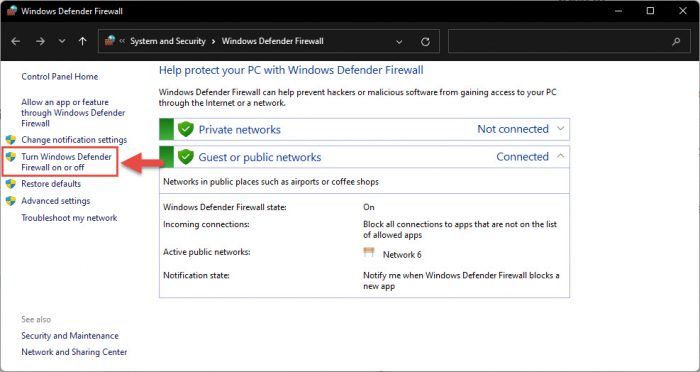
Manage Windows firewall -
Select “Turn off Windows Defender Firewall” under every network profile visible, then click “Ok.”
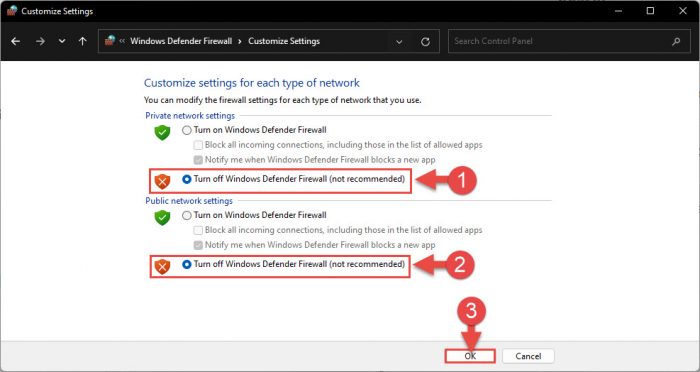
Turn off firewall
Once the firewall is disabled, check to see if you are now able to access the web page. If not, then you will also need to disable any third-party antivirus software (if installed).
Disable Third-Party Antivirus
Third-party antivirus software can block internet connections that they think are malicious. Occasionally, they only block some of the IP addresses, but since the browser cannot reach them, it displays the “This site can’t be reached” error message.
In such an instance, you need to disable this antivirus software and check if it fixes the issue. If it does, then you need to change your antivirus.
Learn how to disable Windows Defender (Windows Security).
Clear Browser Cache
The cache is the locally-stored information on your computer. It may be possible that it is interfering with the data over the network, or simply fetching the cached data and displaying that the website is unreachable.
If this is the case, clearing all browser caches will surely fix the problem. Here is how to clear the cache across all web browsers on your Windows PC:
-
Open the Internet Options applet by typing in “inetcpl.cpl” in the Run Command box.
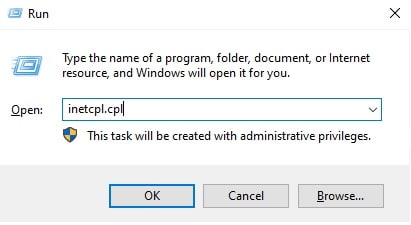
Open the Internet Options applet -
Click “Delete” under the Browsing history section.

Clear all browsing cache and history -
Now select the following items from the list and then click “Delete”:
- Temporary Internet files
- Cookies
- History
- Download History
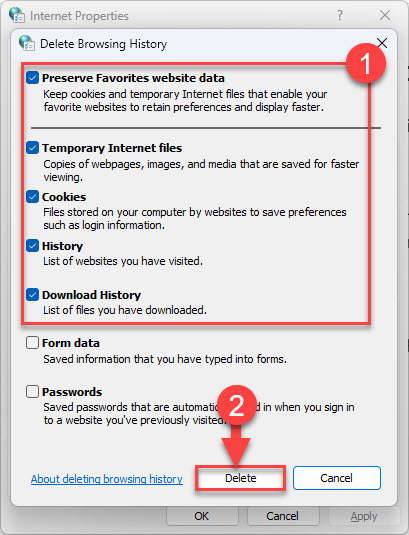
Select browsing history data to delete
The browsing cache and temporary files will now be removed from your computer. Visit the website again and check if you can now access the web page.
If the issue persists, then it is now time to take some drastic measures.
Change DNS Server
It may be possible that your current DNS configuration has become invalid and the server no longer exists, or maybe your computer is simply having trouble communicating with it. If so, try changing the DNS settings manually. Here is how to do it:
-
Open the Network Connections applet by typing in “ncpa.cpl” in the Run Command box.

Open the Network Connection applet -
Right-click on the network adapter that is currently connected to the internet and then click “Properties.”
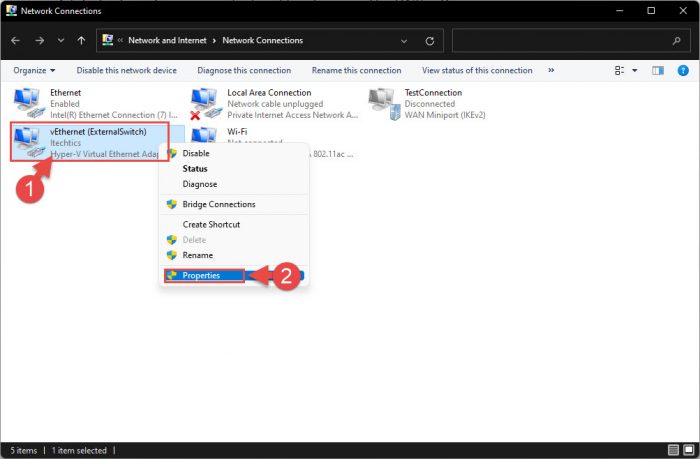
Open adapter properties -
Select “Internet Protocol Version 4 (TCP/IPv4)” and then click “Properties.”
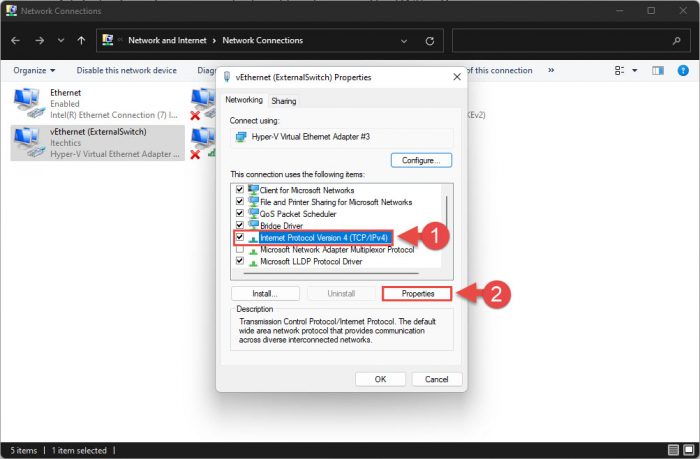
IPv4 properties -
Select “Use the following DNS server addresses” and then enter the following addresses as the Preferred DNS server and the Alternate DNS server:
8.8.8.8 8.8.4.4
Note: These are public DNS servers from Google. Alternatively, you can also enter DNS server addresses provided by your Internet Service Provider (ISP) or your organization’s system administrator.
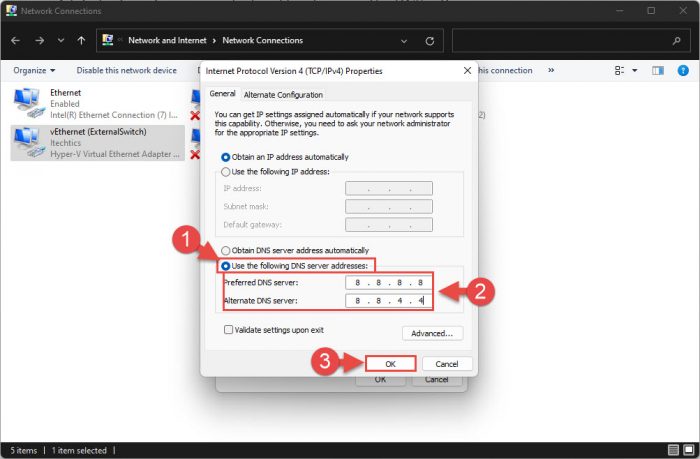
Enter DNS addresses manually -
Click Ok on all windows to save and close them.
After changing the DNS servers, check to see if the issue has been resolved. If it hasn’t, we suggest that you store your old DNS settings and then continue with the fixes shared below.
Disable QUIC Protocol
If you are experiencing the “This site can’t be reached” in Chrome, then it may be because of Google’s proprietary QUIC protocol. The QUIC protocol replaces the traditional handshakes, acknowledgments, synchronization, and initial setup and eliminates the overhead packets, making the connection faster while keeping it secure.
Use these steps to disable the QUIC protocol in Chrome and then check if it resolves the issue:
-
Open Google Chrome and paste the following into the Omnibox.
chrome://flags/
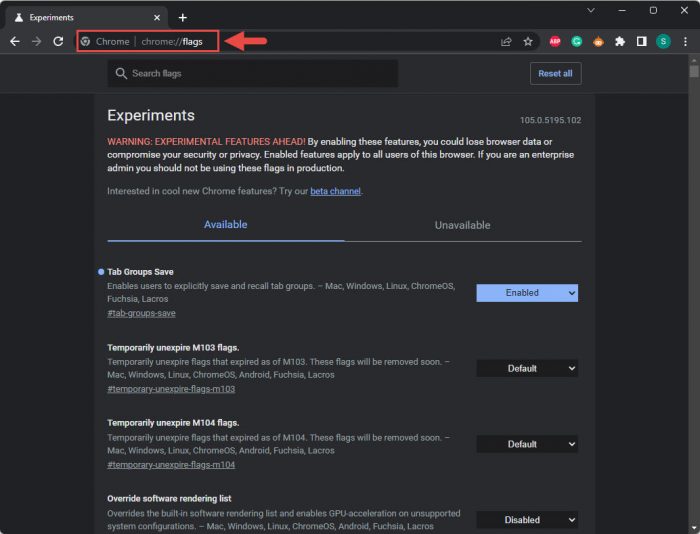
Open Chrome flags -
Search for the following:
Experimental quic protocol
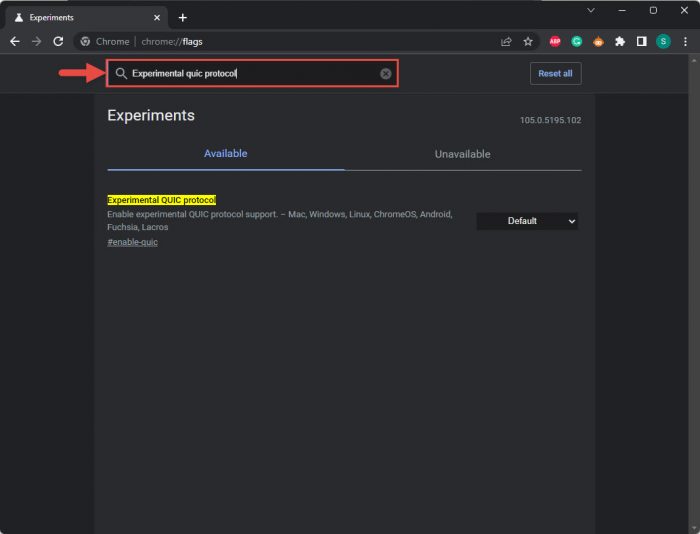
Search for the QUIC flag -
Expand the drop-down menu in front of the highlighted “Experimental QUIC protocol” flag and select “Disabled.”
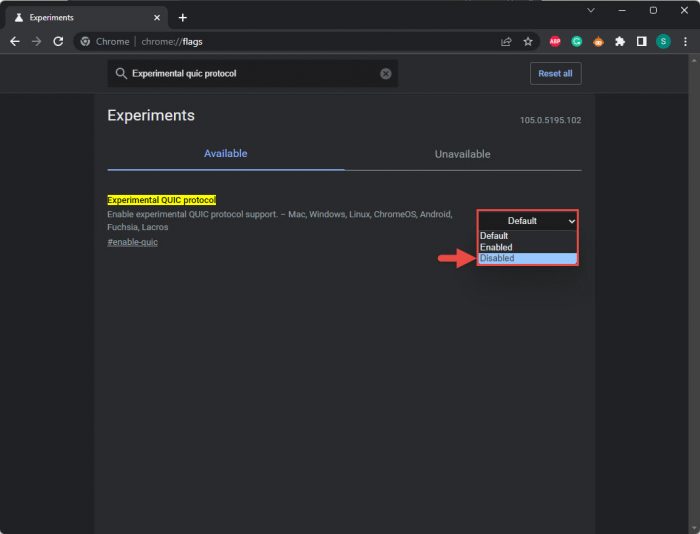
Disable flag -
Click “Relaunch” to restart the browser for the changes to take effect.
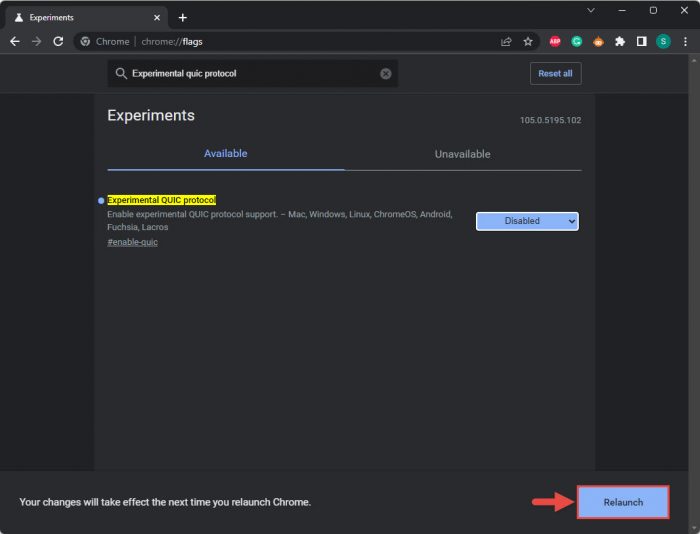
Relaunch Chrome
Reset TCP/IP Stack
If the TCP/IP protocol stack is not working correctly, you will have issues with your Internet connection, like the one we are discussing in this post. A relatively less aggressive way to fix this problem is to clear the TCP/IP stack and start fresh.
Follow these steps to reset the stack, which also includes resetting Winsock:
-
Open an elevated Command Prompt.
-
Run these commands one by one:
These commands will release the IP assigned by the DHCP server, flush the DNS cache, reset the network components, and then re-fetch the IP address from the DHCP server.
ipconfig /release ipconfig /flushdns netsh winsock reset netsh int ip reset ipconfig /renew
Clear TCP/IP stack -
Restart the computer.
When the computer restarts, check to see whether you can access the webpage.
Disable Browser Extensions
Browser extensions, although can be productive, often cause hindrances with other aspects of the browser. To eliminate the risk, we suggest that you temporarily disable all unnecessary browser extensions and check if it resolves the issue.
Note: The steps below are to disable extensions in Chrome. The methods to disable them in other browsers are not so different.
-
Open the browser and click on the ellipses (3 dots) in the top-right corner.
The menu button may be different for different browsers, and at different locations.
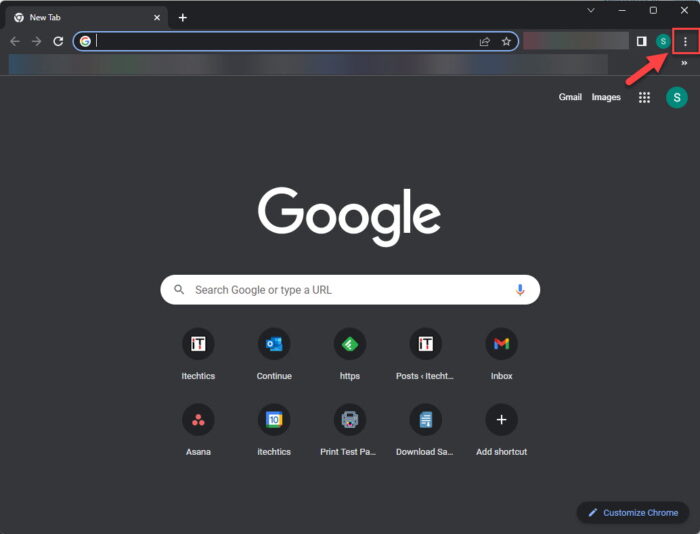
Click the ellipses -
Open the browser’s settings.
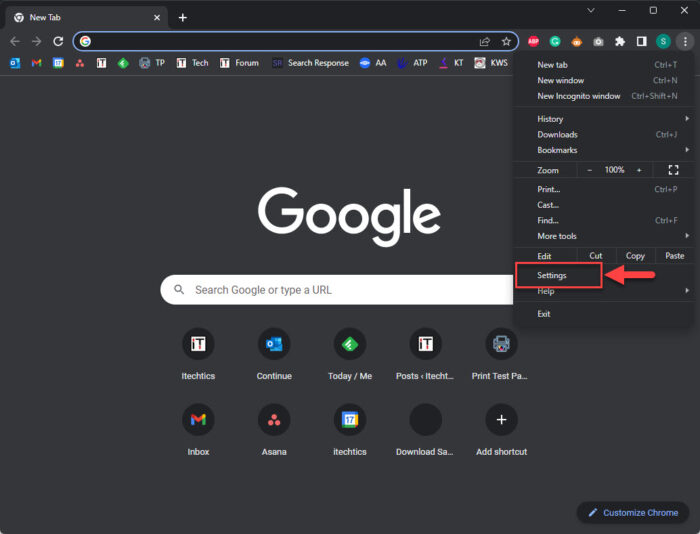
Open Chrome settings -
Switch to the “Extensions” settings.
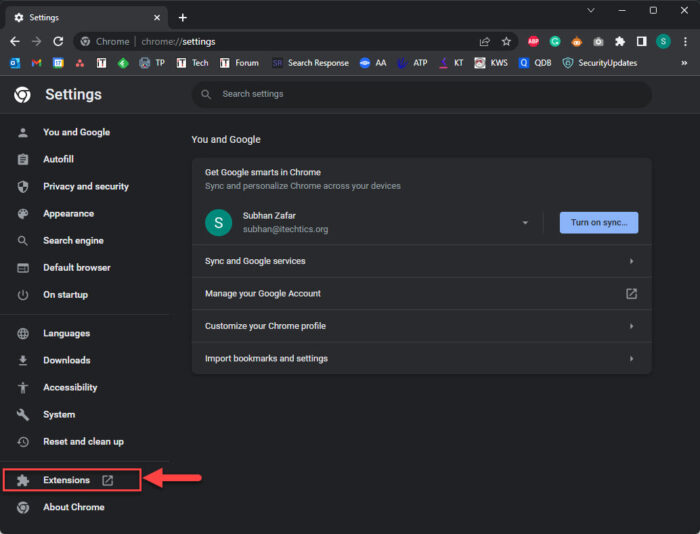
Open Extensions tab -
Toggle the slider into the Off position for the extension(s) that you wish to disable.
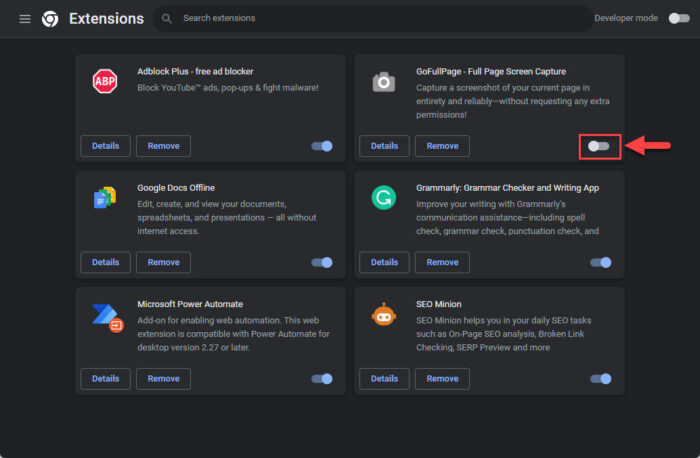
Disable browser extension
We suggest that you disable all browser extensions and check if the issue persists.
These are all of the mitigation steps that you can take to resolve the “This site can’t be reached” (or similar) errors on Google Chrome or other web browsers. Of course, these will only work if the issue was at your end in the first place.
Closing Words
The “This site can’t be reached” error is not only limited to Chrome, nor is it limited to the Windows operating system. It can occur on any platform and any web browser. However, the message statement may vary from browser to browser.
Regardless, the solutions given above to fix it can be applied on your Android or iOS phone, or your Mac.
